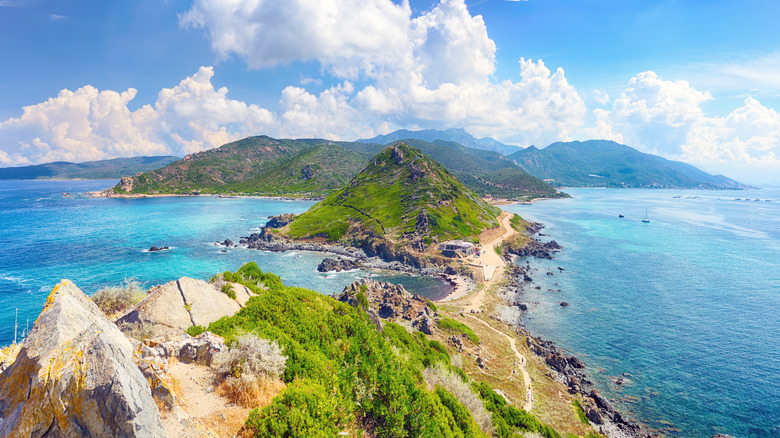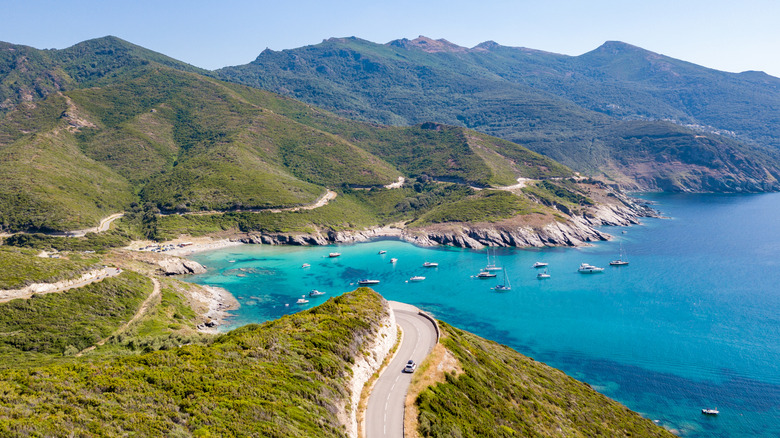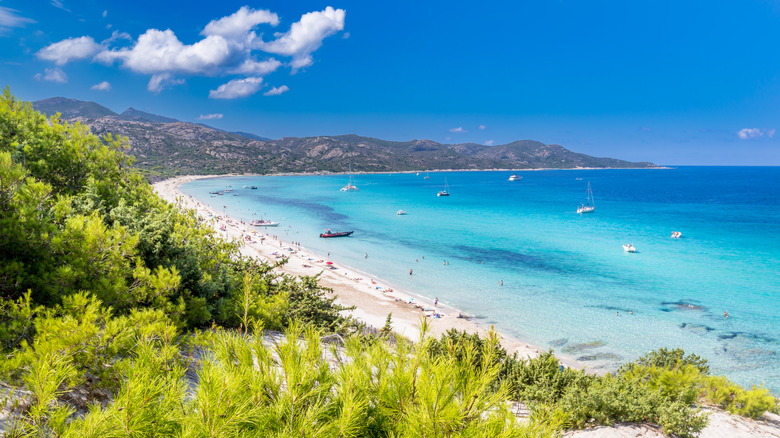Situated Between France And Italy Is An Underrated Mediterranean Island Of Beauty With Sandy Beaches
A notch above Sardinia, 105 miles from the French Riviera and 56 miles from Italy, Corsica's credentials include stunning sandy beaches, coastal cities, forested valleys, and delightfully quaint villages. The island has been a part of France since the French gained control via the Treaty of Versailles in 1768, but Corsica, with its seaside cities dripping down cliffsides in all the gradients of an Amalfi rainbow, has a distinctly Italian flair in places. The island is the Mediterranean's 4th largest. As such, a vacation here can be almost anything: days on iconic stretches of France's lesser-known, Caribbean-style beaches, yachting between Corsica and Sardinia, exploring historic towns and stunning architecture, and foodie explorations of exquisite local dishes, cheeses, and charcuterie.
As Corsica is an island, there are limited routes to reach it, but you can connect via air from many European airports, including direct flights from Paris' Orly Airport (ORY) to Corsica's Calvi Sainte-Catherine Airport in around 1 hour and 35 minutes, and from London's Heathrow with a layover in Paris. You can also travel overland by car or train, and then by sea. The main ferry routes serving Corsica from Italy are from Genoa to Bastia in 5 hours and 30 minutes, and from Livorno to Bastia in about 4 hours. If you're traveling from France, you can travel by ferry from Nice, aka France's 'Winter Resort City Of The Riviera', to Bastia in about 8 hours, or from Marseille to Bastia in 12 hours. From Corsica's Bonifacio, it's a quick 50-minute journey over to Sardinia's Santa Teresa di Gallura to sample some of Sardinia's unmatched food and beaches.
The best sights, towns, and hikes in Corsica
Since Corsica is naturally stunning, Corsican itineraries tend to be filled with outdoor pursuits. And one of its most legendary activities is the GR20 hike from Calenzana in Northern Corsica to Conca in the South, an exhilarating trail along rugged mountain ranges with intensely pretty views. The entire route takes 16 days and is best attempted in July and August, owing to the potential for hazards, but be warned, despite being one of Europe's best hikes, it's also said to be one of its toughest.
Motorists are well-served for road trips with the incredible D84 route that twists along a series of gorges and flowery meadows between Francardo and Porto. The D84 allows you to take in some of Corsica's most stunning natural sights: most notably, the Gorges de Spelunca (full of canyon hikes and riverside trails) and Col de Vergio, the highest road on Corsica at 4,849 feet above sea level.
Corsica's towns and villages are diverse, with Bonifacio clinging precariously to a cliffside and Calvi, a haven of beaches and iconic architecture. One of the best is Ajaccio, Corsica's capital. If you first saw Ajaccio from the water, you'd be forgiven for thinking you'd sailed into Italy, with its colorful houses painted down a long green hillside. Take a stroll around the town, and the Italian aesthetics continue with the 16th-century Italian-built Ajaccio Cathedral (where Napoleon Bonaparte was baptised). Some of the island's best restaurants are here too, including A-Nepita, whose dishes are crafted from fresh market ingredients and local seafood. But wherever you dine, look out for the delicious civet de sanglier, a dish of wild boar and chestnuts, unique to the island.
Exploring Corsica's beautiful beaches
It would be remiss to talk about Corsica but not mention its fiercely beautiful beaches. There are sandy beaches with all the trimmings, of course, but its best beaches are those that still have a hint of wild about them. Osticoni on the northwestern shore, for example, is a white sandy beach surrounded by a ring of undulating peaks and dunes, the water lapping at bare feet in dreamy tones of cerulean and turquoise. And sunsets here are sublime. From Osticoni, hikers can follow the Sentier des Douaniers (Customs officials' path) east to Saint Florent via the gasp-inducing Saleccia beach, a favourite amongst yachters. But if you're sailing in Corsica, there are few better beaches for anchoring than Plage de Roccapina. You'll sail into a narrow inlet with mountains rising from both sides and find a relatively quiet beach, with a flick of white sand and a view-laden walking trail from which to admire the bay.
If you're specifically searching for white sands, there are many, but the windsurfing beach at Pianterralla is one of the most beautiful, but it does come with the expected crowds. However, from here it's a short stroll past some Roman ruins to the comparatively quiet Petit Spérone beach, a delightful bay of white sand and exceptionally clear, glassy waters, with views of the Lavezzi islands on clear days. Another option is Calvi Beach, just outside of delightful Calvi, that has the benefit of calm, family-friendly waters, nearby restaurants, and views of Calvi's distinctive citadel.


